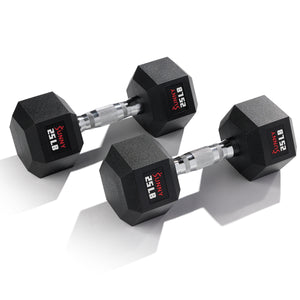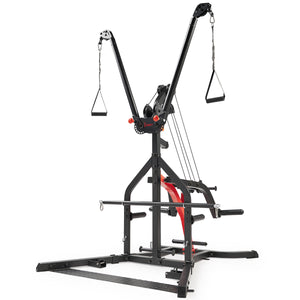You have likely heard the terms ‘cardio’ or ‘strength’ when describing types of exercise, but what about anaerobic and aerobic exercise? Aerobic exercise probably calls to mind visions of leotard-clad fitness instructors of the 80’s and 90’s, while anaerobic may sound like something completely foreign to you. Both types of exercise describe the physiological pathways in which our body creates energy (also known as ATP) to exercise, and both are essential for a healthy, well-rounded fitness routine.
Simply stated, aerobic and anaerobic exercise are terms used to describe exercise that requires oxygen or does not require oxygen to create energy, respectively.(1) Here’s the rundown on the difference between both types of exercise, why they are important, and how you can fit each type of training into your weekly routine. Let’s get into it!
What is the Difference Between Anaerobic and Aerobic Exercise
As mentioned previously, aerobic exercise means “with oxygen” and anaerobic exercise means “without oxygen.” Of course, it is critical to ALWAYS incorporate your breath into every exercise you do, so this doesn’t mean you’re restricting oxygen flow into your lungs. Rather, it refers to how your body metabolizes fuel (the food you eat) to create energy (ATP) needed for exercise.
Aerobic Exercise
Aerobic exercise is endurance-based exercise that can be sustained for long periods of time. Think Zone II training; activities like jogging, cycling, swimming, or dancing are all examples of aerobic exercise.
With this type of movement, your breathing rate will be elevated, but not to the point where you are huffing and puffing. As you exercise, your body uses oxygen molecules during metabolism to create larger volumes of ATP that is required for long term exercise. This process is slow, but the demand for immediate energy is low, so your body is able to take the leisurely route when it comes to ATP production. The primary fuel sources for this type of exercise are fats and carbohydrates.(1)
This type of exercise is important for improving heart health markers, like reducing blood pressure, blood sugar, and cholesterol levels. Additionally, it will help with improved stamina and weight management.
Anaerobic Exercise
Anaerobic exercise is activity that is generally high intensity and usually sustained for shorter periods of time. Weight training, HIIT workouts, or sprinting are all examples of anaerobic exercise.
When participating in this type of movement, your body needs to create energy fast. This means your metabolism takes the quicker route when processing fuel and creates ATP in the absence of oxygen. While the metabolic process that creates energy with oxygen is still in use (hence why you might have an elevated breath rate) it is not the key source of energy creation – the anaerobic process is leading the way. The primary fuel source for this type of exercise is carbohydrates.(1)
This type of exercise is important as it helps you build strength, promotes a healthy body composition, improves metabolic function, and reduces risk of chronic diseases. Additionally, certain types of anaerobic exercise, such as strength training, will promote healthy bones and joints as you age.
Which type of Exercise is Better?
A well-rounded exercise regimen should include both anaerobic and aerobic exercise. However, when considering which type of exercise to prioritize, look to your health and fitness goals.
If your goals are endurance based – for example, you are preparing to run a 5k race – you might want to place your training focus on aerobic exercise. However, that’s not to say you should completely ignore anaerobic exercise, as you would be missing out on some pretty significant health benefits that accompany that type of training.(2)
If your goals are body composition or strength based – for example, you are working towards increasing your lean muscles mass – you should consider prioritizing anaerobic exercise. Again, that doesn’t mean to completely cut out any aerobic training. It’s important to incorporate Zone II training to fight cardiovascular and other chronic diseases.(2)
If your goals are to improve health and create balance in your fitness, your routine should reflect that as well! Emphasize both aerobic and anaerobic training to reap all the amazing benefits of exercise.
How to Incorporate Each Type of Exercise into Your Routine
There is no right or wrong way to determine your personalized ratio of aerobic to anaerobic exercise. As discussed, this will be based entirely on your own fitness goals. However, here are some ground rules to think about when setting up your program:
1. Strength Training
Research shows that strength training is most beneficial when done 2-3 times per week. At a base level, try to meet this minimum; however, if your goal is to build some major strength, increase this frequency to 3-5 days per week.
2. Cardiovascular Training
The American Heart Association (AHA) recommends adults complete 150 minutes of moderate intensity training or 75 minutes of high intensity training per week. That can be split up throughout your week in a way that makes the most sense for you. It is important to note that these numbers are minimums, and more can certainly be helpful, especially if you are looking to focus more on endurance-based training.
3. Recovery
ALWAYS make sure to incorporate rest days into your routine. 1-2 days of complete or active recovery is essential for reaping the benefits from all your hard work.
Sample Week
If this all feels a little overwhelming, not to worry! Here is an example of how you might consider setting up your week. Again, this will vary from person to person and will depend on your specific health and fitness goals.
- Monday:
- 30-min Walk
- Full Body Strength Training
- Tuesday:
- 30-min Walk
- Stretching and Mobility
- Wednesday:
- 30-min Walk
- Full Body Strength Training
- Thursday:
- Active Recovery or Complete Recovery
- Friday:
- 30-min Walk
- Full Body Strength Training
- Saturday:
- 30-minute Walk
- Stretching and Mobility
- Sunday:
- Active Recovery or Complete Recovery
Become a Well-Rounded Athlete
Training both your anaerobic and aerobic capability is not only important for having a well-rounded fitness routine, but it also rewards you with the health benefits that each type of training provides. You can enjoy your favorite method of working out while also offering your body what it needs to be optimally healthy, carrying you through each day with strength and ease. Try something new and see how much further it can take you!


1. Chamari, K., & Padulo, J. (2015). ‘aerobic’ and ‘anaerobic’ terms used in exercise physiology: A critical terminology reflection. Sports Medicine - Open, 1(1). https://doi.org/10.1186/s40798-015-0012-1. Accessed 9 July 2024.
2. Patel, H., Alkhawam, H., Madanieh, R., Shah, N., Kosmas, C. E., & Vittorio, T. J. (2017). Aerobic vs anaerobic exercise training effects on the cardiovascular system. World Journal of Cardiology, 9(2), 134. https://doi.org/10.4330/wjc.v9.i2.134. Accessed 9 July 2024.

























Add Your Name & Email
Please enter your name and email to continue.We won’t display your email publicly.
2 comments
Thank you for the article. This was enlightening and helpful for my planning.
I simply love the articles posted, you provide insight and education in such a user friendly and easy platform to understand.